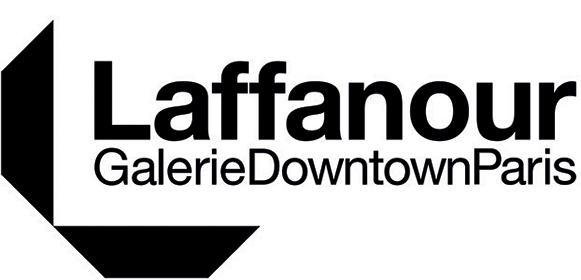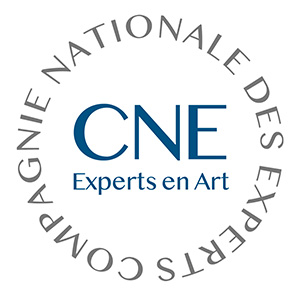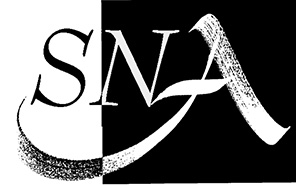History of the lamp
Architects and designers were passionate about it.
Because naturally, the light creates the decor, it illuminates it, allows it to express itself. What a wonderful adventure, the original flame becoming a light! The adventure of this flame of the past, golden, protective, which one day, with a simple finger movement playing with the switch, delivers the desired clarity to a workplace, or a resting place…
From the Antiquity oil lamp, to candles from the Middle Age, until the first Swan and Edison incandescent bulb, technical innovations have allowed the lamp to evolve over the centuries … From the wonderful lampshades in Tiffany glass to the provocative models of the 1960s and 1970s, a lamp is a testimony of a changing society, in a perpetual artistic and technological research. Lighting is a privileged witness of the whole world evolution. The great diversity of lamps, in terms of shape and materials, can also be explained by the multiplicity of uses. The Romans celebrated public celebrations with illuminations. Lamps were hung on windows the day a Prince was born. Thus, over the centuries, the lamp has continued to transform, and modify its services.


From the beginning of humanity, the fire was the only source of light, the first way to fight against darkness. Fire intervenes as a psychic progress before being technical!
As many forms as lamps !
From the beginning of time, the evolution of the design follows human needs: to heat, to protect themselves, to light up, and finally to decorate the habitat!

Le Souffleur à la lampe, Georges de la Tour, 1640… Light inspires painters from the Caravaggesque school! It is a crucial element of the composition.

Interior design of the Orrouer hotel belonging to Hubert de Givenchy. The lamps serve the overall decor, complement it and highlight it.

Innovation and aesthetics! Above, the Lépine and Bourdon lamp with triple air flow and glass vase.

Throughout the 20th century, the lamp continued to free itself from its primary function, it became a sculpture, it became a work of art on its own, it surprised the eye and often aroused curiosity through its forms and materials. At the very beginning of the century, its aesthetics followed the free spirit of the Belle Époque, and the forms were part of the floral style, particularly intense with the Art Nouveau style. The lamp is adorned with curves, colors, arabesques.

This Lotus glass table lamp, in molten glass, ca 1900-1906, designed by Tiffany Studios, was one of the most prestigious pieces of the time. The choice of Lotus reveals not only the oriental and Islamic influence that reigned over Art Nouveau, but also the fascination of this time for forms borrowed from nature. Like this Mushroom lamp by Emile Gallé (on the right)…

Louis Comfort Tiffany house, Oster Bay, Long Island

In the vast European Art Nouveau movement, the ephemeral Jugendstil movement seeks a break with the past! Peter Berens turns his back on the aesthetics of the late 90s and joined a totally different movement.
The following decade the Art Deco style imposes rigor and an almost total ornamental denudation. Straight lines are essential, and curves are prohibited. The late 1920s dictate a strict structure on the furniture, especially with the lamps.

This model of table lamp by Edouard-Wilfrid Buquet, ca 1927, in chromed metal, shows these technological innovations put to service of Design. He filed a pendulum lamp patent in 1927, this revolutionary lamp remaining stable thanks to a clever adjustable counterweight system, with a base also weighted down. This system will also be used by Marcel Breuer, Jacques-Emile Ruhlmann…

Created in 1924, the “Religieuse” lamp by Pierre Chareau is one of the 20th century masterpieces! A true sculpture, where the artist dears to make a solid wooden barrel, round and sensual, coexist with a very incisive alabaster, only weakened by its translucency! While evoking the famous religious “cornette”…

The parallel is inevitable! Carlo Mollino designed this model of lamp in brass, marble and parchment in 1947, which he called « Standard ».

The famous and timeless WG25 lamp, created in 1924, by Wilhem Wagenfeld, German industrial designer and member of the Bauhaus.
Jacques-Emile Ruhlmann, French decorator of the 1920s, set about creating light fixtures with clean lines, “enamored of slender forms, finely rhythmic, he tasted lovingly, almost sensually these precious materials which he harmonized as well outside or inside his furniture »

This lamp from the collection of the Metropolitan Museum of New York was designed by Rulhmann in 1926.

He participated in the decorating of the Ile-de-France ocean liner, with the help of Jules-Emile Leleu, André Mare and Louis Süe, and even the painter Mathurin Méheut. Here, the First Class lounge.


Jean Prouvé asserted « that there are no differences between the construction of a piece of furniture or a house ». This octagonal chandelier by the French architect, ca. 1927, in hammered wrought iron and frosted glass, also draws its inspiration from very rigorous, architectural forms. We are on the border between Art Nouveau and Art Deco, we feel the approach of modernity!

In the same idea, Robert Mallet Stevens, a French architect and designer, produced his masterpiece and true architectural manifesto: the Villa Cavroix, at Croix. The table lamp in the Hall-lounge, ca. 1929, is above all a functional light. Almost minimal.

Light is no more than a simple bulb, it becomes the playground for the Union des Artistes Modernes artists, especially in this hall of their first exhibition in 1930.

Jean Royère, iconic self-taught decorator of the 20th century, thinks of furniture with a fanciful, uninhibited design, breaking free from the codes. He devotes himself above all to the notion of decor and imagines real “ensembles” with a unique aesthetic. This Liane Lamp, ca. 1950, puts ornament at the service of functionality. Jean Royère deforms the metal tube which becomes a wavy line, like a climbing plant. It goes beyond the primary function of lighting.
And as for our great 1950s designers, they play simplicity with the creation of potence lamps!

Lamp becomes lamp again, in its simplest device, with Jean Prouvé, according to the state of mind and the aesthetic movement of the time, among French post-war architects. This potence lamp, ca. 1947, in black lacquered tubular metal, combines elegance and minimalism of means.

House in Meudon, ca. 1952

Charlotte Perriand also designs swiveling potence lamps. This rare model (1938) comes from her own apartment in rue Las Cases in Paris.

Her lightings are intended to be functional, like all of her furniture. She imagines the wall sconce « CP1 », ca. 1965, lamp with pivoting shutter, an ingenious system allowing to move the orientation of the light. Her vast construction site in Les Arcs in Savoie is an opportunity for her to apply her ideas in mass production.

Here, the lamp is part of a specific urban project. This concrete light was designed by Le Corbusier in 1954. The model was first produced for Cité Radieuse garden in Marseille, and then will be also used in the public spaces of the city of Chandigarh and the Sarabhai villa in Amhedabad in India.

In the 1950s, the lamp became sculpture!

Isamu Noguchi, in order to save his native village in difficulty after the war, designs a series of lights inspired by the Japanese lantern tradition. The aesthetic is modern, the artist calls it « light sculpture« . The lamps are made of Mino paper, made from the mulberry tree, and the shapes are reminiscent of traditional fishermen’s baskets.



Exhibition at Steph Simon gallery, on boulevard Saint-Germain in Paris

Serge Mouille, originally a goldsmith and brassware graduate, also decides to devote his entire creation to lighting, after being an apprentice of the decorator Jacques Adnet. Throughout the 1950s, Mouille designed lamps with angular load-bearing structures but with curved reflectors evoking plants with a soft and sensual form of the female breast, thus mixing inventiveness and delicacy. He developed a unique brass ball joint system to allow the reflectors to rotate to the desired light.


He created in the 60s this series of so called totems and signals evoking New York buildings.

The work of artist Dan Flavin is highlighted here. « Light is an industrial and familiar object » writes Donald Judd in 1964 when he looks at Flavin’s work, « it is a new form of art; henceforth art could be composed of all kinds of objects, materials and new techniques.”

Mouille says that « his lights are a reaction to contemporary Italian models », which he said were « too complicated » …
Let’s talk about !
At the same time, Italian post-war design was marked by a significant change compare to inter-war period. A whole generation of creators would perceive furniture in a completely different, often entertaining way, where it will be a question of reinventing forms and function. The colors, the shapes, the primary aspect of the object, are re-imagined and sometimes, made fun of!

The Fontana Arte company, founded by the architects Gio Ponti and Luigi Fontana, benefits from the economic prosperity of the 1950s. The highly qualified craftsmen at its service are constantly looking for innovative techniques and new models, like this glass suspension, ca. 1955, below.

Gino Sarfatti, known for his incredible passion for lighting, creates models full of fantasy, which reflect the climate of lightness and exuberance that prevailed in post-war Italy.

The constant search for innovation in terms of shape and materials brings Gino Sarfatti to the design of this « Moon » suspension, ca. 1969, one of the singular creations that will make his reputation!

Above, another model of floor lamp illustrating the extremely diversified production of the designer, combining rigor and minimalism, the model « 1063 », ca. 1954. He uses neon as a structural and decorative element.

In the mid-1960s, a dissenting group of Italian architects and designers – including Ettore Sottsass – followed the Antidesign movement in reaction to the consumer society. He will be as much an industrial designer, confronted with ergonomics and productivity, as a creator free to invent all the furniture and objects from his imagination! Asteroid lamp, designed in 1968, illustrates the creative richness of the designer.



The « Ultrafragola » mirror, now a true icon, combines the two functions, to be seen, certainely, but in an « enlightened » way. It was designed in the early 1970s and will be produced by Poltronova. Its sinuous silhouette evokes a wavy woman’s hair …
« In what concerns the lights that come out from « grey furniture », don’t the tombs always have sparkling lights which illuminate the sadness of the wandering spaces in the dusty valley? And the submarines don’t they have green lights flashing in their belly? The lights are supposed to come out of the fiberglass body, like the bright white light of the skin of white breasts, or the bright red tip of the penis in porn nights, something like that, I mean something like the Japanese fireflies that transform the nights of May into solid matter. Can there be something more ridiculous? «
(Ettore Sottsass, « Could something be more ridiculous? », In « Design », London, 262, October 1970)

“Ettore Sottsass” exhibition, 2017, Galerie Downtown, Paris

Superstudio archives: the light in the decor is reduced to a simple bulb, in opposition to the eccentricity of the rest of the decor.

Gaetano Pesce and his “Aiport” lamp, designed in 1986, in urethane and metal. He said, « I like useful things, like furniture or light fixtures, which I turn into militant elements. » As a visionary designer, he always used the materials of his time, as a way to better understand his era.

And above, the Moloch lamp, ca. 1970. Masterpiece by the artist, this lamp is probably one of the last euphoric creations of the artist, which will also be one of the icons of the exhibition consecrating Italy and the artist: » Italy, the New Domestic Landscape « at MoMA in New York in 1972.

Below, Golden Gate floor lamp designed in 1970 by artist Nanda Vigo, who was particularly interested in light and its dynamics, and who built space using light elements and materials from industrial production, namely glass, mirror and neon.

During her career, she met Lucio Fontana, who also worked with light, notably creating neon structures, entitled “Luce Spaziale”, for the IX Triennale in Milan in 1951, but also for the Italian pavilion at Turin exhibition in 1961…

The Greek artist Vassilakis Takis, who disappeared recently, has never stopped, throughout his prolific career, creating magnetic and sound works, powerful, veritable hymns to energy and the universe. One day, while waiting for the train to London, he was fascinated by the incessant ballet of signals and flashes that surrounded him. The monumental La Defense sculptures (above) are imagined as a forest of light that Man artificially creates to find his way and avoid death.

Above, Takis Light Signal in a private collection.

Back in France at the end of the 1970s, Philippe Starck designed « Easy Light ». He thus conceives the total disappearance of the lamp as an object, to keep only a stick of light, a simple beam that can be in permanent movement, according to the needs of its owner.

Here, Philippe Starck and his Easy Light walk around Bains Douches!

Above, a pair of bright nightstands designed by Ron Arad, from his One-off era. The work is a doubly functional object, but it is also a real sculpture, following an almost punk aesthetic.

In 1980, he also designed this remote-controlled telescopic arm lamp, called « Aerial Light ».
Change of a scenery !

Ingo Maurer, recently disappeared, a German designer trained in graphic arts, specializes in lighting and devotes himself to the creation of lighting sets. The latter are characterized by a poetic, enchanting style, always with a touch of humor and playfulness.
Below, the pendant light « Cuore Aperto » designed in 1996 specially for the « Sagra », an annual Italian party that Ingo Maurer particularly liked.


Here, this 2.80m diameter aluminum prototype which was produced for the Hudson Hotel in New York in 2000.
Today, a contemporary sculptor can also see in the functional object a way of putting his work into “Light”, like Richard Texier whose lightings take up a terrestrial and aquatic bestiary from the Trees of Life, which he created in the 2000s.


Olafur Eliasson, a contemporary artist, explores the different facets of what he calls « materiality », in particular the notion of light. His works are monumental and sensory. Above, the Weather Project, designed in 2003 for the Tate Modern in London. This powerful light installation takes the visitor to another world: a work between poetry and surrealism.


James Turell, American contemporary artist, designs a series called « skyspaces », which consist of bright, self-contained rooms, providing an immersive experience. Each room has an opening in the ceiling that opens up to the sky, to bring light to the viewer by making it oscillate between sky and earth.
And there was Light !



